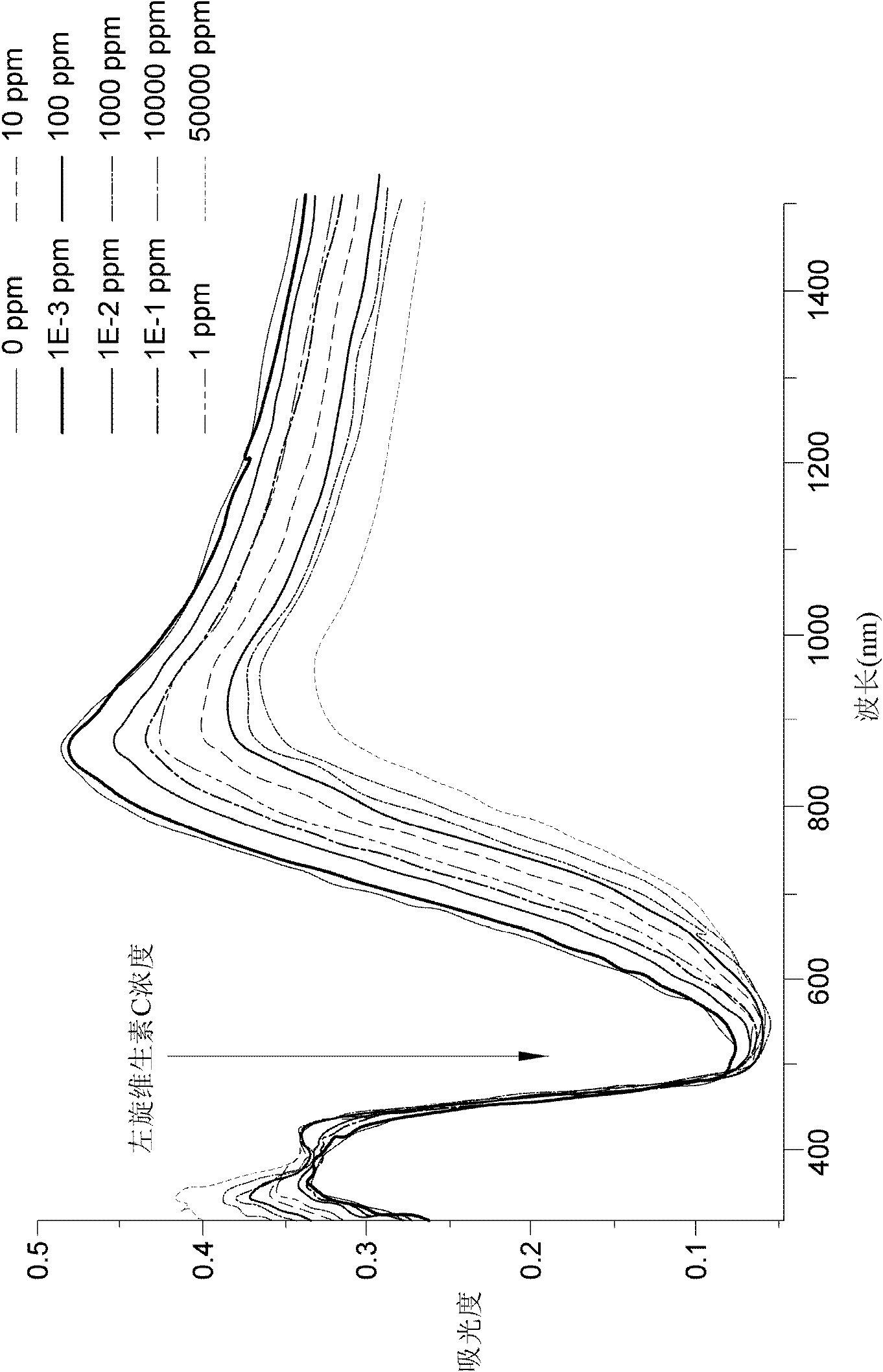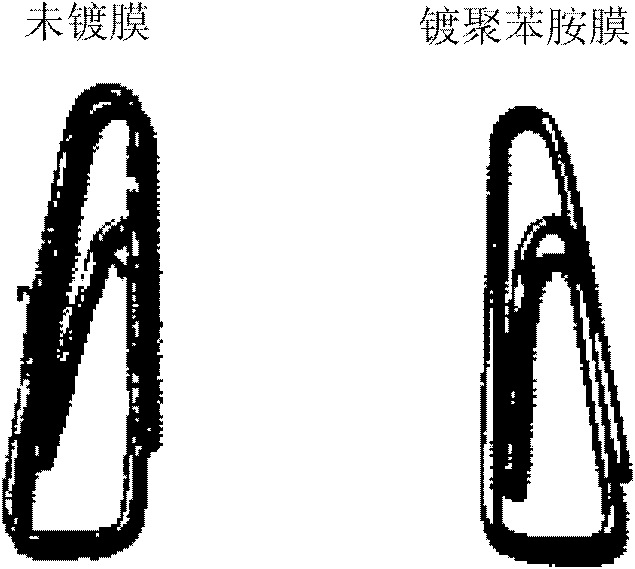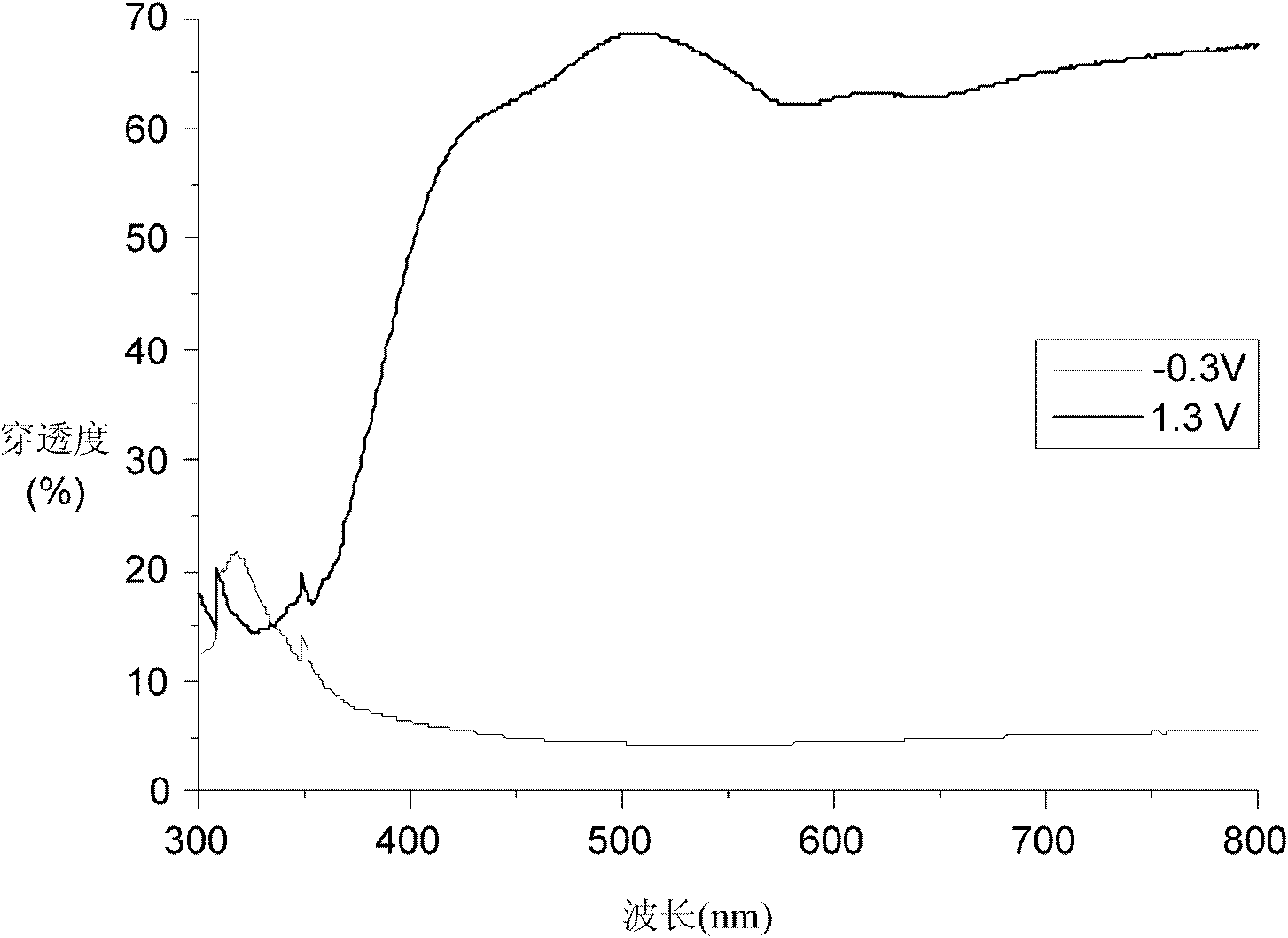Conductive polymer solution and preparation method thereof
A technology of conductive polymers and conjugated polymers, applied in photovoltaic power generation, non-metallic conductors, organic material conductors, etc., can solve problems such as organic solvent residues and complicated steps
- Summary
- Abstract
- Description
- Claims
- Application Information
AI Technical Summary
Problems solved by technology
Method used
Image
Examples
Embodiment 1
[0073] Example 1: Application of Conductive Polymer Solution in Electrolytic Capacitor
[0074] Firstly, an aluminum sheet was oxidized for 30 minutes with a voltage of 40V to form a layer of porous aluminum oxide film. After chemical formation, the test piece was rinsed with deionized water and dried in an oven. Next, drop conductive polyaniline solution (conductive polyaniline (structure such as formula (17) dissolved in hexafluoroisopropanol)) on the porous etched aluminum oxide foil, and then coat it with a layer of carbon glue after it dries. Then send it to the oven for drying to remove the solvent. Then evenly coat a layer of silver glue on the surface of the carbon glue, and then dry it in the oven. Finally, cover the silver glue with gold foil and clamp it with the alligator clip connected to the negative electrode. The crocodile clip connected to the positive electrode clamps the wire, and the capacitance property can be measured. The results are shown in Table 1, w...
Embodiment 2
[0079] Example 2: Application of Conductive Polymer Solution in Light-Emitting Diodes
[0080] Drop a drop of the conductive polyaniline solution in Example 1 on the cleaned ITO glass surface, and after it dries to form a film, a layer of poly[(2-((2-ethyl-hexyl) -oxy)-5-methoxy-p-phenylene)vinylene](MEH-PPV) (the solution used was dissolving 6 mg of MEH-PPV in 1 ml of toluene). Coated a layer of thickness on the MEH-PPV film by vacuum evaporation Al as the cathode can be assembled into a polymer light-emitting diode with a double-layer structure with a conductive polyaniline film as the hole transport layer. The same method was used to assemble a single-layer structure of polymer light-emitting diodes without conductive polyaniline film. Compare two polymer light-emitting diode components with different structures and measure their current-voltage curve (Current-Voltage Curve) and potential-brightness curve (Voltage-Brightness Curve) respectively (the power supply and curr...
Embodiment 3
[0085] Example 3: Application of Conductive Polymer Solution in Chemical Sensor
[0086] Drop a drop of conductive polyaniline solution (same as Example 1) on the surface of 10 cleaned polyethylene terephthalate (Polyethylene terephthalate, PET), and make 10 conductive polyaniline films with the same thickness after drying . Prepare 10 cups of L-vitamin C aqueous solution in addition, the concentration is 0ppm, 10ppm respectively -3 ppm, 10 -2 ppm, 10 -1 ppm, 1ppm, 10ppm, 100ppm, 1000ppm, 10 4 ppm, 5x10 4 ppm, and the pH value of the L-vitamin C aqueous solution was adjusted to 1 with hydrochloric acid aqueous solution, and the conductive polyaniline film was immersed in different concentrations of L-vitamin C aqueous solution for three minutes, and the UV / visible light absorption spectrum of the conductive polyaniline film was detected. . The result is as figure 1 As shown, the conductive polyaniline film is used as a chemical sensor, immersed in an aqueous solution of...
PUM
 Login to View More
Login to View More Abstract
Description
Claims
Application Information
 Login to View More
Login to View More - R&D
- Intellectual Property
- Life Sciences
- Materials
- Tech Scout
- Unparalleled Data Quality
- Higher Quality Content
- 60% Fewer Hallucinations
Browse by: Latest US Patents, China's latest patents, Technical Efficacy Thesaurus, Application Domain, Technology Topic, Popular Technical Reports.
© 2025 PatSnap. All rights reserved.Legal|Privacy policy|Modern Slavery Act Transparency Statement|Sitemap|About US| Contact US: help@patsnap.com



